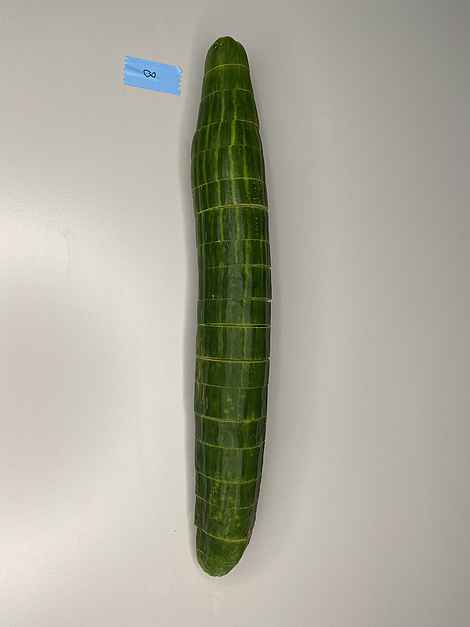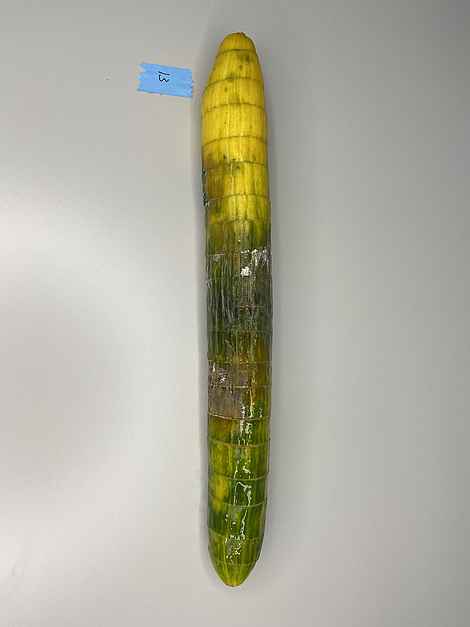Organic products have increasing sales and are gaining importance on the market and among consumers. There are already various studies on the question of quality compared to conventional products. One possibility is the chemical analysis of individual ingredients, some of which are directly related to the type of fertilisation. A major difference between conventional and organic farming lies in the type of nitrogen fertiliser used and its availability. Instead of the mineral, easily soluble nitrogen in conventional fertilisers, organic farms use organically bound, less easily soluble nitrogen. As a result, the plants develop more dry matter and a higher concentration of phenolic defence substances [1]. These increase stress resistance and thus the potential to ward off pathogens.
In addition to the quantitative analysis of individual compounds, quality statements regarding vitality can be made on the basis of complementary methods. They relate to the product as a whole. These include, for example, storage and degradation tests. In a stress storage test, the antimicrobial properties (AMP), colour retainment properties (CRP) and slice healing properties(SHP) of cucumbers were determined. The latter parameter reflects the ability of the sample to develop "healing tissue" after being completely sliced into 15 to 20mm thick slices and to restore the structure. This defined, severe tissue damage (slicing) is a significant stress factor that challenges the vitality of the samples. The healing of damaged tissue is important for plants to protect themselves against microbial infections and also after mechanical damage. It is associated with a better shelf life of the cucumbers and thus a higher product quality. The improved vitality is beneficial for consumers. Doesburg-van Kleffens et al. (2025) used the stress storage test to investigate the influence of conventional, organic and biodynamic cultivation on these three parameters in cucumbers [1].
Study design
Biodynamic, organic and conventional cucumbers (Cucumis sativus L.) from local retailers (supermarkets, health food shops, vegetable markets and wholesalers) were analysed in three different laboratories in Denmark, Germany and Switzerland. The use of market samples enables a realistic situation from the consumer's point of view. The researchers determined the following parameters: diameter, length, weight, dry matter, CRP, AMP and SHP[1] . The analyses were carried out eight times at different points in time in each laboratory, with 12 cucumbers per cultivation system being tested. The researchers analysed a total of 864 cucumbers. They also determined the dry matter content of the different variants in around 40 samples.
Firstly, they measured the diameter, length and weight of the samples. They then cut the cucumbers into slices according to a defined procedure. They then placed the slices together in their original orientation and wrapped them in cling film. The samples were then stored in the dark in a closed heating cabinet at 23.5°C, without humidity control
After 14 days, the researchers visually assessed the parameters AMP (antimicrobial property) and CRP (colour retainment). To do this, they compared the samples with a reference photo series developed in Denmark and graded them on a scale of 0 to 10. For AMP, 0 meant "visible microbial infestation on all discs", 10 "no visible infestation on all discs". For CRP, 0 corresponded to "yellow discolouration on the entire surface" and 10 to "green on the entire surface". To measure the SHP value (slice healing properties), a load test was performed, as the healing properties of a sample, i.e. how the slices grow together, are based on the ability of two interfaces to withstand a weight load. To determine this, the researchers loaded the sliced, incubated cucumbers with weights, which they increased until the interface broke. The SHP value was determined from the load weight. The mean values of each parameter from all three cultivation systems and laboratories were used to analyse the results
Results
At 385.4g, the weight of the conventional cucumbers was significantly higher, at on average 4.5%, than that of the biodynamic cucumbers at 367.9g (p < 0.05). The diameter was also significantly larger in the conventional cucumbers (45.0mm vs. 43.8mm, p < 0.05). The organically grown cucumbers were in between for both parameters (weight 379.5g, diameter 44.3mm). There were no significant differences in length between the samples of the three cultivation systems. At 2.77%, the dry mass of the conventional cucumbers was significantly lower than that of the organic and biodynamic cucumbers (3.13% and 3.28%, p < 0.05).
The biodynamically grown cucumbers had the highest values for all three stress parameters, while the conventionally grown cucumbers had the lowest. The difference was highly significant for all three values (p< 0.0001). The values of the organically grown cucumbers, which were in the middle, were also very or highly significantly different from the values of the conventionally grown cucumbers (CRP and AMP: p < 0.0001and SHP: p < 0.001). The CRP value of the biodynamically grown cucumbers was highly significantly and the SHP value was significantly higher than the values of the organically grown cucumbers (p < 0.0001 and p < 0.1). There was no significance between the two cultivation methods for the AMP value.
It was found that the biodynamically grown cucumbers had the best shelf life under stress conditions in 58–71% of the tests, while this was only the case in 25–38% of the tests for organically grown cucumbers and in 4–8% of the tests for conventionally grown cucumbers.
Discussion
The use of so-called biodynamic preparations lies at the heart of biodynamic agriculture. They are applied in very low doses, so that their effectiveness is constantly being scrutinised. Bioactive compounds and microorganisms could already be detected in horn manure preparations, which stimulate nutrient processes in the soil and plant growth [1]. A 2019 study found that biodynamically grown apples had a greater diversity of microorganisms and significantly fewer pathogens than conventionally grown apples [2]. The improved colour retainment and slice healing abilities of the biodynamically grown cucumbers in this study could be due to the effect of the plant microbiome stimulated by the preparations. In addition, previous studies have linked the preparations to a higher content of secondary plant substances such as antioxidants, polyphenols and vitamins [3, 4, 5, 6]. The better antimicrobial properties of the biodynamic samples could be related to a higher content of these substances, as they have a protective effect against stress.
All three stress storage parameters – antimicrobial properties, colour retainment and slice healing properties – describe the vitality of cucumbers. Vitality can be understood as the "ability of a living organism to develop, maintain and execute life processes and the life cycle even under unfavourable conditions" [1]. The higher the values of the storage parameters, the more vital the vegetable is. It can better withstand external stress, such as during storage. One of the aims of biodynamic agriculture is to produce vital food
The samples in this study showed a high degree of variability in terms of origin, growing conditions and variety. Nevertheless, the large number of tests per cultivation system and, above all, the unambiguousness and level of significance of the results underline the conclusions about the quality of the individual biodynamic, organic and conventional varieties.
Consumers usually have a particular expectation of quality when they buy biodynamic produce. The fact that this is justified is shown by the best values for the biodynamic cucumber samples observed in over two thirds of the trials, with their greater vitality and better shelf life compared to organic and conventional cucumbers
Bibliography
[1] Doesburg-van Kleffens M, Andersen JO, Gründemann C, Fritz J (2025): "Effects of cultivation systems on the antimicrobial, colour retention and slice healing properties of consumer ready market samples of cucumber (Cucumis sativus L.)" Applied Food Research, 5(1). https://doi.org/10.1016/j.afres.2025.100754
[2] Wassermann B, Müller H, Berg G (2019): "An apple a day: Which bacteria do we eat with organic and conventional apples?" Front. Microbiol. 10:1629.doi: 10.3389/fmicb.2019.01629
[3] Heimler D, Vignolini P, Arfaioli P, Isolani L, Romani A (2012): "Conventional, organic and biodynamic farming: Differences in polyphenol content and antioxidant activity of Batavia lettuce" Journal of the Science of Food and Agriculture, 92(3), 551–556. doi.org/10.1002/jsfa.4605
[4] Juknevičienė E, Danilčenko H, Jarienė E, Fritz J (2019): "The effect of horn manure preparation on enzymes activity and nutrient contents in soil as well as great pumpkin yield" Open Agricultur, 4, 452-459. doi.org/10.1515/opag-2019-0044
[5] Vaitkeviciene N, Kulaitiene J, Jariene E, Levickiene D, Danillcenko H, Srednicka-Tober D, Rembialkowska E, Hallmann E (2020): "Characterisation of bioactive compounds in coloured potato (L.) cultivars grown with conventional, organic, and biodynamic methods" Sustainability, 12(7). https://doi.org/10.3390/su12072701
[6] Malagoli M, Sut S, Kumar G, Dall'Acqua S (2022): "Variations of elements, pigments, amino acids and secondary metabolites in Vitis vinifera (L.) cv Garanegaafter 501 biodynamic treatment" Chemical and Biological Technologies in Agriculture, 9 (1), 36. doi.org/10.1186/s40538-022-00299-y
[1] AMP: antimicrobial properties
CRP: colour retainment properties
SHP: slice healing properties

